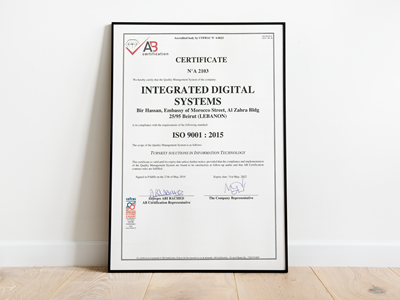Management and leadership are two different processes composed of different functions and specific activities. Both processes are necessarily for the success of organizations. However, both terms can be confused and related. Researchers argued that managers and leaders are different types of people. They discussed that managers have a short-term vision, react to problems, and work with individuals to complete daily and routine tasks without considering the motivational or relationship aspects. While leaders are more emotionally involved with people, proactive rather than reactive, and are capable of expecting and coping with change. Leaders are different from managers because they focus on strategy, vision, disruption, and changing the status quo. It is important to make a distinction between the two terms since they have different roles and manage various organizational aspects. The purpose of this article is to identify managers from leaders and analyze the similarities and differences between leadership and management.
A leader is a person who anticipates the events, manages change, and brings value. A leader has the ability to transform vision into reality and influence the members of a group to work effectively. A leader has the responsibility to achieve the organization’s goals and objectives by motivating and correctly aligning the team members. On the other hand, a manager has the responsibility to implement accurately and efficiently the company’s processes and procedures. Moreover, a manager should ensure that all team members are doing their job accurately and delivering on time. Leaders create visions, promote change, take risks, set long term plans, build relationships, and align people. While managers create defined goals, maintain the status quo, control risks, build systems, implement processes, and recruit staff.
Consequently, it is important to distinguish between leadership and management. Leadership is the process to influence people to attain objectives willingly and efficiently. Management is a discipline to control processes and implement leadership visions and change. It is the skill to deliver work seamlessly with the least cost and highest quality. However, Leadership is a significant element of management. Moreover, management and leadership are both involved in the responsibility of attaining the organization’s goals, managing people to deliver the work, and ensuring that they function correctly. They are complementary for the success of the organization, but each process is carried out with different activities and skills.
The importance of management lies in the rise of large organizations. Management has a significant role in coping with complexity and preventing chaos in enterprises. Management ensures that companies are running efficiently to produce quality products or services with high profitability. On the other hand, leadership is about coping with change and disruption. Leaders need to be innovative with a vision to face the fast technological development, high competition, disruptive technology, and economic changes. Organizations need leadership to survive and grow. A good example to compare leadership and management is the army. A country’s army would perform efficiently with the proper management in time of peace. However, during wartime, the army needs leaders to prevail and win the war.
Moreover, management is responsible for setting the correct processes and procedures to run the organization, deciding the budget, and planning the needed resources. Management recruits the needed qualified people and communicates the tasks to them. Leadership, by contrast, aligns people. Alignment is defined as the convergence of the team's efforts and responsibilities to the management’s direction, objectives, and vision. Moreover, leadership has a major role in influencing and motivating team members to deliver, overcome obstacles, and solve problems.
However, management and leadership have their similarities. They are both essential for the growth and the proper functioning of the organization. Both processes affect people to attain the organization’s goals. Leadership and management both involve creating a framework for work, aligning resources to attain defined goals, taking a responsible role, and creating success.
Although there are notional differences between management and leadership, there are significant similarities at the organizational and operational level. They overlap to align and influence people to reach organizational goals and create success. Management focuses on administration, control, maintenance of the status quo, and preservation of quality and performance standards. While leadership focuses on people, innovation, change, coping with disruption, and formulating visions. Both processes are complementary and vital for prospering of organizations.













Comments